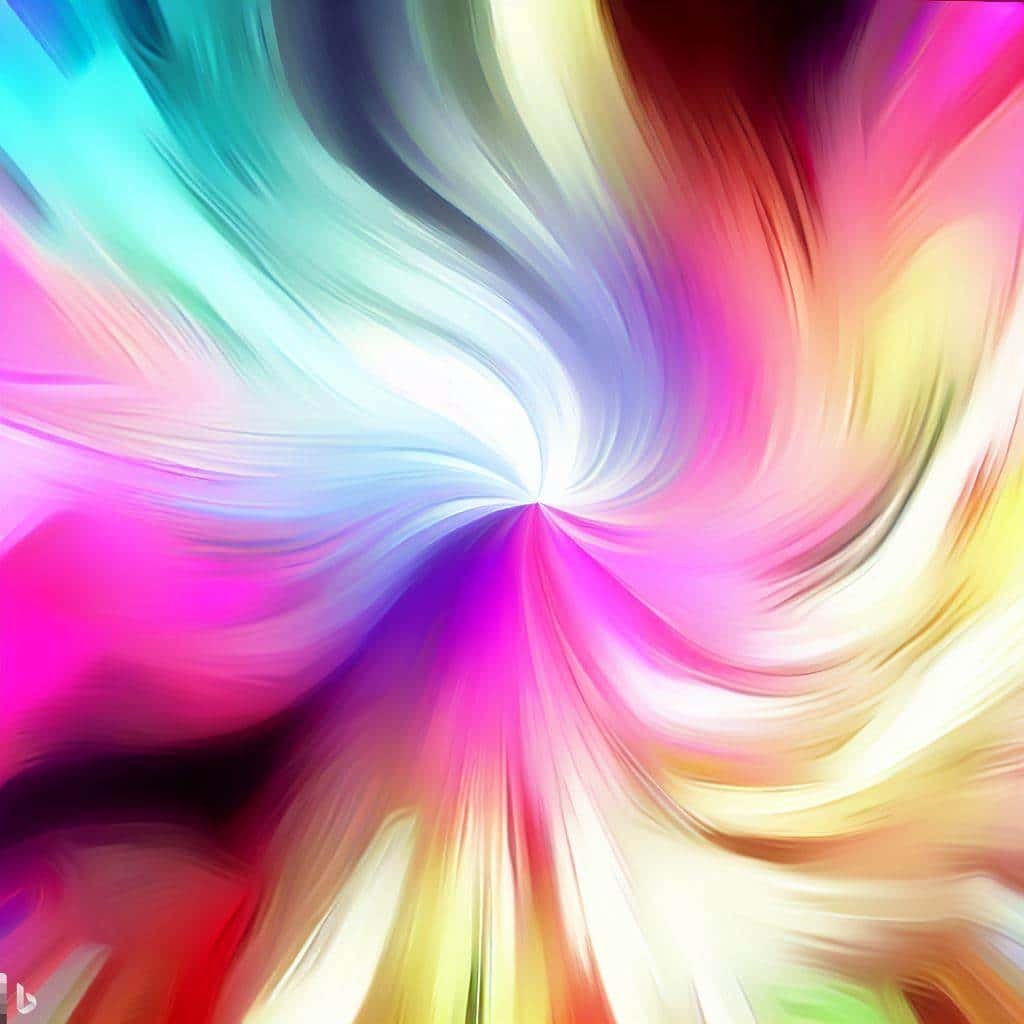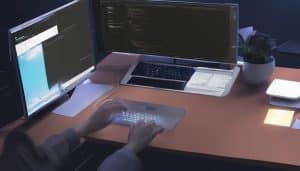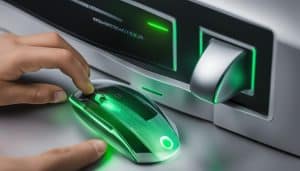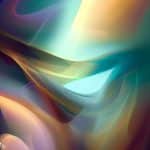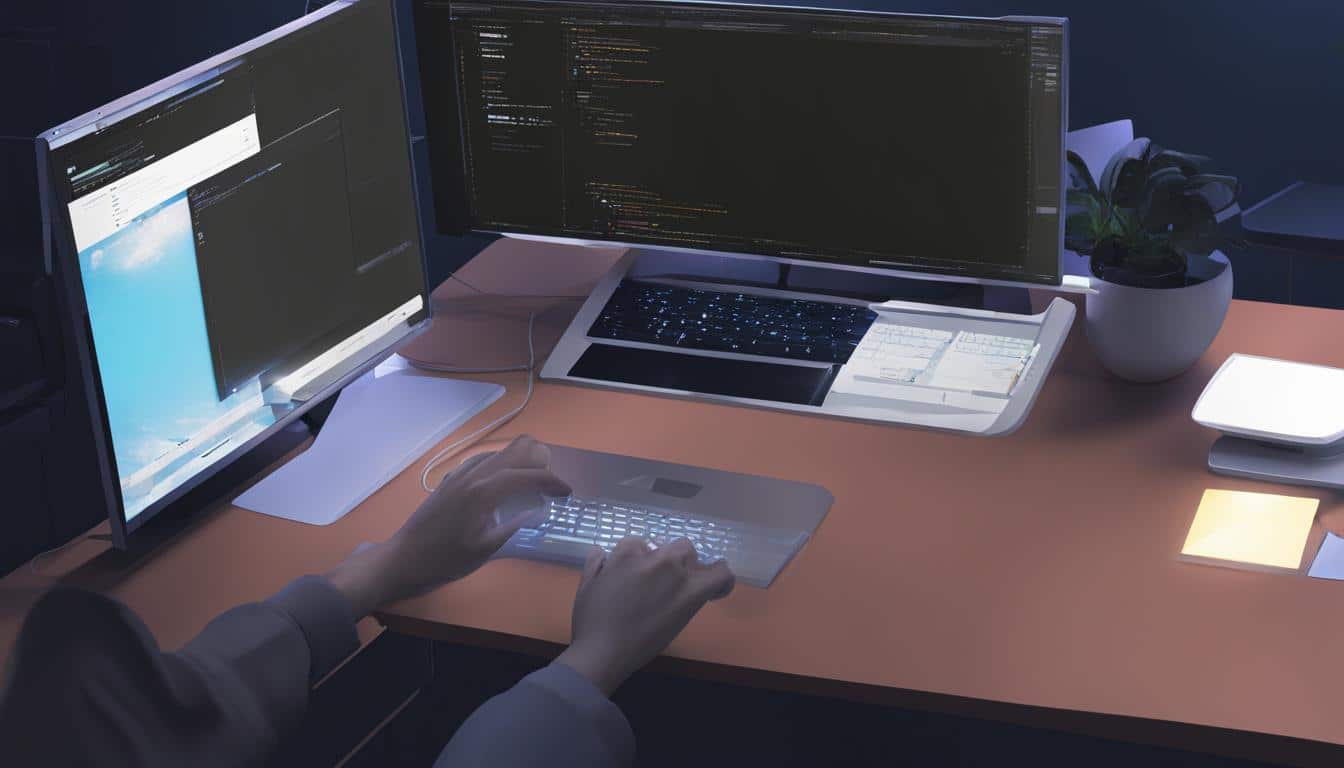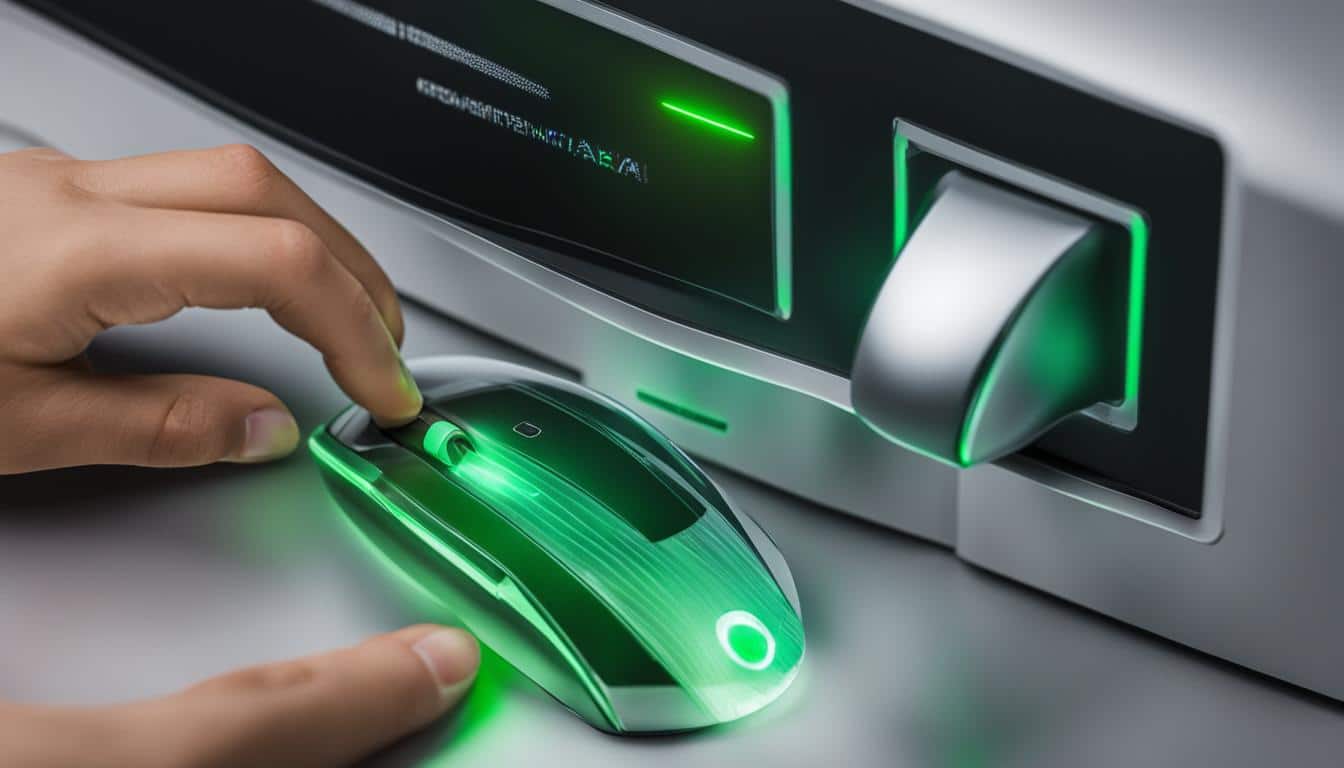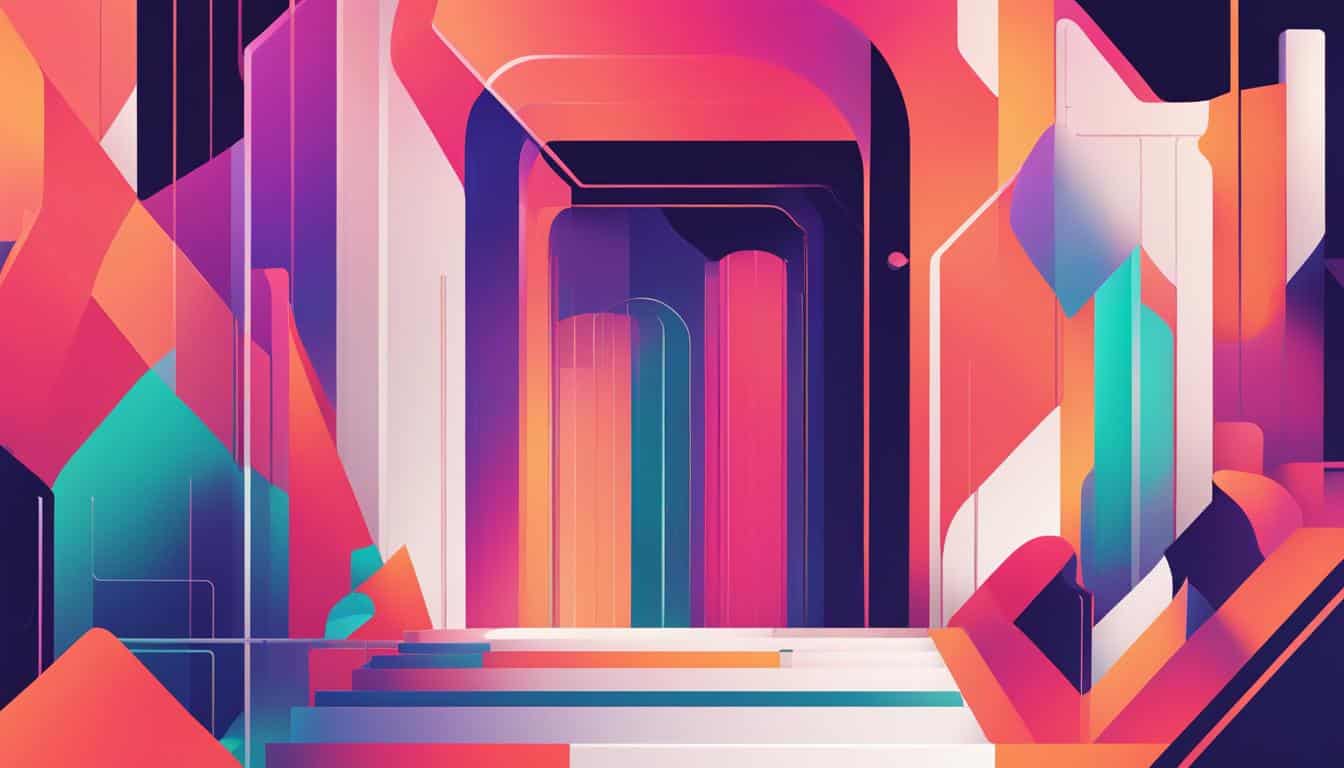Getting Started with Digital Art
To begin your journey in digital art with confidence, it’s essential that you familiarize yourself with the underlying concepts and techniques. In order to achieve this, the following sub-sections will be your guiding light: Importance of Understanding Digital Art, Choosing the Right Tools for Digital Art, and Understanding Digital Art Software such as Photoshop, Illustrator, and Procreate. Dive into these sub-sections to learn all the tips and tricks you need to start creating digital art like a pro.
Importance of Understanding Digital Art
Digital art is revolutionizing creativity and expression by fusing technology with artistic thinking. By understanding design software and tools, graphic designers and artists can effectively communicate their ideas to their viewers.
To create unique digital art, one must be knowledgeable in color theory, typography principles, grid-based layout design, negative space, and more. This form of art gives the freedom to edit images without sacrificing quality or realism. And, compared to conventional art, digital artwork requires only a computer system with efficient software, reducing production time significantly.
By mastering digital art, one has the chance to break away from traditional artwork and have a vast range of canvas across multiple industries. It began in the 1960s when artists explored new ways of expressing themselves through computer-generated images by combining photographs into grids and related structures.
Always bear in mind: the right tools can make or break your digital art career – so choose carefully and don’t get stuck using a mouse like it’s 1998!
Choosing the Right Tools for Digital Art
When creating digital art, having the right tools is key. Here’s what you need to know:
Hardware:
- A powerful computer with a good graphics card.
- Optional: Drawing tablet with stylus.
Software:
- Adobe Creative Suite or equivalent.
- Optional: Procreate (for iOS devices).
Digital Brushes & Textures:
- A variety of brushes that simulate traditional media.
- Optional: Unique brush sets for specific effects.
To take your digital art to the next level, experiment and discover new techniques. Try layer masks and blending modes. Try different brushes and texture packs. Play around with lighting effects.
For extra elevation, consider these tips:
- Join an artist community.
- Incorporate traditional media elements.
- Practice and experiment.
Digital art is about creating something unique. With the right tools, you can make stunning artwork that stands out. Start creating today!
Understanding Digital Art Software: Photoshop, Illustrator, Procreate
Digital art can be made using different programs, such as Photoshop, Illustrator and Procreate. They each have their own unique features which let artists make professional artwork.
The table below outlines the main features of each software:
| Software | Key Features |
| Photoshop | Wide range of editing tools, great for complex work, supports vector graphics |
| Illustrator | Ideal for vector graphics and typography, best for print design projects |
| Procreate | User-friendly, good for beginners, lots of brushes and effects |
It’s important to notice that all these software programs support layers. This lets the artist work with different elements of their artwork individually.
Plus, there are other digital art software programs on the market, depending on the artist’s preferences or needs.
My friend is a digital artist who always uses Procreate for concept art. She loves its user-friendly interface and lots of brushes. Her favorite feature is having the ability to replay her creative process, which helps her go back and edit old ideas.
Good news: you don’t need to be a tech whiz to make digital art. Bad news: you might have to do some research and watch tutorials.
Technical Skills for Digital Art
To improve your digital art skills, it is important to be well-versed in technical skills. In order to get started with digital art, you must learn about image resolution and dimensions, color theory, layering techniques, brush and tool settings, and file formats and saving. These sub-sections will give you the basic technical knowledge needed to create artwork in the digital medium.
Image Resolution and Dimensions
Creating digital art? You must understand image resolution and dimensions. Quality is determined by these two. And lack of knowledge may lead to pixelated or blurry art.
To help you, here’s a table of resolutions and their respective sizes:
| Resolution | Dimensions |
|---|---|
| 72ppi | 1024px x 768px |
| 150ppi | 1200px x 800px |
| 300ppi | 2480px x 3508px |
Remember, higher resolution means larger file size. So when choosing, factor in quality and practicality.
For a long time, digital art had limited resolution and dimensions. But as tech improved, better resolutions became available allowing for more detailed artworks. Now, digital artists have many resolution options.
Coloring inside the lines? No way! Not when it comes to digital art. Color theory is a must!
Color Theory
Colour psychology is a key part of digital art. It helps artists communicate different emotions, moods and feelings through colour. Examining how people perceive colours, how they affect behaviour, and how they interact can give a sense of balance and unity to artwork.
This understanding helps you use colour schemes effectively. Knowing that blue is calm and red is intense can help you choose the right combination for a project. Colour symbolism is also important; it can vary from country to country and even between subcultures. Understanding this can make artworks more dynamic and meaningful.
Applying this analysis to your design process can be inspiring. From background to foreground hues, diversity can be portrayed.
In recent years, colour psychology has become popular in visual design trends. For example, Apple’s minimalist designs integrate green gradients for a refreshing look.
Adding depth to digital art with colour psychology: layer like an onion, pixel by pixel.
Layering Techniques
Layer sequencing strategies are essential for digital art. Learn to sequence layers in six easy steps!
- Plan your composition
- Sort assets
- Start with a background layer
- Add foreground elements
- Then intermediate layers
- And top it off with final touches.
Be mindful of file sizes to prevent computer crashing. Save often and have back-up plans! Get ready to paint like a pro with brush and tool settings.
Brush and Tool Settings
When it comes to digital art, configuring Brush and Tool Settings is crucial. Here’s a list of settings for different types of artwork:
| Brush/Tool Type | Size | Opacity | Flow | Pressure Sensitivity |
| Pencil Sketch | Varies with style | 100% | 100% | For thicker lines, increase. For thinner, decrease. |
| Digital Painting | Varies with canvas/image size and effect. | 50%-100% | 70%-90% | For more color, increase pressure. For less, decrease. |
Brush sizes depend on the line style required. Opacity controls how visible each stroke is. Flow affects how fast paint appears on the canvas. Pressure sensitivity on devices like Wacom tablets can vary line width.
Try different brush shapes for unique textures and effects. Experimenting with settings can lead to new techniques. Saving in the wrong file format is like displaying Picasso in a medieval castle.
File Formats and Saving
To be successful in digital art, it’s essential to know file formats and saving techniques. The right format ensures compatibility with software and web-based projects, as well as efficient storage. This can be called “Correct Formats and Effective Saving Techniques“.
Here’s a table of different file formats for digital art, their features, and possible uses:
| File Format | Features | Possible Uses |
|---|---|---|
| JPG | Small size, compressed, loses quality upon multiple compressions | Photos, web graphics |
| PNG | High-quality images, supports transparency | Web graphics, logos |
| GIF | Animation support, limited colors | Short animations, web graphics |
| TIFF | High resolution, supports layers | Professional print-quality designs |
| PSD | Layers support for editing | Professional graphic design projects |
It’s also important to use the correct naming convention when saving files. This makes identification easier when needed.
Plus, use the right compression level when saving an image in a specific format.
Before exporting digital art images, make sure to remove any metadata from images captured through cameras. This avoids security issues.
Remember, some websites require a certain format when uploading artwork. For example, Instagram works best with square images between 1080px x 1080px resolution.
Mastering file formats and saving techniques saves time and effort during post-production processes. Digital art is like walking through a maze blindfolded, except instead of walls you have endless possibilities.
The Creative Process for Digital Art
To enhance your creative process for digital art with helpful tips, explore the following sub-sections: Finding Inspiration for Digital Art, Sketching and Drafting in Digital Art, Digital Painting Techniques, Adding Textures and Effects, and Critiquing and Improving Your Digital Art. Each sub-section will delve into unique techniques and strategies to help improve the quality and creativity of your digital art.
Finding Inspiration for Digital Art
As digital artists, we search for inspiration for our creations in many ways. We can observe the world around us, noticing its unique shapes and colors. Or, we can turn inward, going deep into our emotions and ideas to make something unique.
We can look to different cultures and their art and history to find ideas. This can help us comprehend how art has developed over time and in different regions. We can also search online, on social media or specialized sites.
Self-reflection can also be a useful tool to generate original ideas. Meditation and mindfulness can assist us to connect with our innermost thoughts and feelings, to come up with something new.
Pro Tip: Dare to experiment with different techniques if your current methods don’t work. Getting out of your comfort zone can be the key to unlocking new ideas. Digital art sketching is like drawing on an endless Etch A Sketch, but mistakes are harder to erase and you can’t shake it to begin again.
Sketching and Drafting in Digital Art
Crafting a Base for Digital Art
Sketching and drafting are the base of any digital art. The creative process involves various techniques; combining images and ideas perfectly. Therefore, it is essential to start with a strong sketch.
A 3-Step Guide for Sketching and Drafting in Digital Art:
- Begin With Primary Forms – Always begin crafting your image using primary forms.
- Improve Your Drawing – Add details to your sketches as you refine your image.
- Test Different Colors – Consider diverse color schemes that will give life to your sketch.
Unique Features in Sketching and Drafting:
Experiment with perspective by using one-point and two-point perspectives when making backgrounds. Grasp the distinct characteristics of the different brush styles that each software provides, making each piece one-of-a-kind.
Don’t miss out! Aspiring artists, give yourself a chance to produce extraordinary pieces with this modern approach to digital art. Bear in mind that having many techniques available will open numerous possibilities for you to become a skilled artist.
Painting in the digital age: where errors can be fixed with a single click, but the struggle to select the ideal color still lingers.
Digital Painting Techniques
Create Digital Art with Innovative Techniques!
Digital art demands a unique set of skills. Learning digital painting involves using software, tools, and techniques creatively to make out-of-this-world artworks. Color theory, composition, lighting…various factors to bear in mind when crafting digital art.
Innovative Strategies for Digital Paintings
To craft beautiful digital paintings, choose the right software and hardware. Popular tools among artists are pressure-sensitive tablets with styluses. Try out different brushes, opaque or transparent, with a variety of textures.
Layers are crucial in enhancing the quality of your masterpiece. Adjust opacity and blend multiple layers together for a more realistic look. Color Theory is also important, since it affects mood, tone and overall quality.
The Evolution of Digital Painting
From pixelated computer graphics to sophisticated enhancements like better graphics processors and greater storage capacity – digital painting has come a long way. Layer masking and understanding different colour palettes has allowed artists to make extraordinary digital masterpieces! Let’s crank it up a notch!
Adding Textures and Effects
Introducing visual elements can take artwork up a notch. Diverse textures and effects can make it more dynamic and attractive. Textures give a sense of depth, dimension and surface. Superimposing them can add realism. Effects like filters, shadows and lighting techniques, give depth to images.
Using texture brushes can give an organic feel. Digital effect filters can be used creatively. Blend effects with objects for uniformity without making areas look out of place. Tackle a few techniques first to gain insight into what works best.
Pro Tip: It’s all about subtlety; minor enhancements make the most impact. Try creating blur gradients when blending textured layers into artwork for seamless cohesion. Challenge yourself to improve and your digital art could rival the Mona Lisa!
Critiquing and Improving Your Digital Art
To improve your digital art, analyze and enhance it. Carefully evaluate to recognize areas needing improvement. Follow these 6 steps:
- Study initial design.
- Analyze features.
- Spot problems.
- Make alternative versions.
- Get feedback.
- Continue improving.
Examine each part of the work. Let constructive criticism help point out deficiencies. According to Adobe Systems (2020), post-production critiques can refine the creative flow and help avoid mistakes. Unlock your inner artist and draw basic shapes. Impressive brush strokes too!
Tips for Improving Your Digital Art Skills
To improve your digital art skills with storytelling, collaboration with other artists, experimenting with different styles and techniques, joining digital art communities and forums, and continuing education in digital art, this section on tips is here. Delve into sub-sections that address different aspects of improving digital art skills in order to gain an in-depth understanding and practical guidance.
Storytelling in Digital Art
Digital art is a flexible medium, enabling artists to share their ideas and stories effectively. Incorporating storytelling into digital art can help make pieces more powerful and engaging. By carefully creating their work from composition to colors and tone, artists can evoke emotions in their viewers. This helps the audience connect with the artwork more deeply, increasing its impact.
To make digital art with storytelling, it’s important to set a clear narrative or message. It should be consistent throughout the artwork, so it doesn’t confuse or clash. With visual elements such as symbols, contrast, and lighting, an artist can heighten emotions in their audience, and tell their story.
Storytelling is important, but don’t overload the artwork with too many narratives or complex imagery. Simplicity often works better; focus on one main message or story, while using minimalism and symbolism.
Pro Tip: Look to films, books, and other media for inspiration when making your narrative. Storyboarding can help organize and visualize your ideas. Collaborate with other artists – you never know what might happen!
Collaborating with Other Artists
Working with other creatives is a great way to level up your digital art! Here are some tips for collaborating well:
- State expectations clearly from the start.
- Recognize each other’s talents and assign tasks accordingly.
- Welcome feedback and give constructive criticism.
- Set a timeline and hold regular check-ins.
- Celebrate wins and learn from mistakes together.
It’s also key to collaborate with people who share your creative vision. This ensures the final product reflects both of your artistic styles.
If you need help finding like-minded creatives, try joining art communities online or attending local events for artists.
Maximize the benefits of collaboration by taking on projects that push you out of your comfort zone. This way you can gain new abilities and techniques from other talented people.
In short, collaborating with other creatives opens up growth opportunities by combining skills, talents, and perspectives. Effective collaboration is beneficial for everyone involved, no matter if it’s a personal or professional project. Add some variety to your art – don’t stick to the same old boring stuff!
Experimenting with Different Styles and Techniques
Dive into fresh techniques and styles to upgrade your digital art capabilities! Here’s three things to remember when experimenting:
- Don’t stay within your comfort zone; try out new software programs, brushes or textures.
- Follow influential artists on social media and incorporate a variety of compositions and colours.
- Educate yourself on unusual digital art techniques, like mix-media art and 3-D modeling. It could even lead to collaborating with fellow artists and improving your skills.
Take a chance to mix pastel colours or add mixed reality elements to your work, creating unconventional art that reflects the world.
First, identify your weaknesses and start developing them. Practice daily, learn from experienced artists and experiment with alternative materials.
Study tutorials or take classes online at sites like Skillshare or Lynda.com. Access their library of specialized courses for creative and practical instructions from highly respected professionals.
Experimenting with different styles is essential to progress any artist’s skills. Stepping out of comfort zones and trying unique processes successfully will help unlock creativity. Join digital art communities to find creatives who understand the struggle of drawing hands.
Joining Digital Art Communities and Forums
Grow Your Digital Art Skills with Community & Forum Participation!
Join digital art communities and forums to take your artistic skills to the next level. Here’s five ways to make the most of it:
- Follow influential artists in your niche. Learn their techniques and styles.
- Give constructive feedback to fellow artists. Analyze your own strengths and weaknesses.
- Participate in art challenges or contests. Explore different genres and themes.
- Examine art tutorials shared by members. See how these methods could work for you.
- Join discussion threads on digital art trends; get new ideas, tools, and resources.
Plus, engaging in these communities can give you a sense of belonging.
Pro Tip: Always keep an open mind when receiving critique or feedback— it’s not easy, but it will help you develop as an artist. Who needs a degree when you can just go to YouTube tutorials and look like you have one?
Continuing Education in Digital Art
Artists must stay current in the ever-evolving digital art field. Gaining knowledge of new techniques and software can improve their skills.
To sharpen digital art talents, they should research and join workshops or courses. Online resources, such as YouTube tutorials, Skillshare classes and Udemy courses, offer self-paced learning.
Experimenting with different styles and techniques builds individual style. Connecting with other digital artists on social media or in groups can bring ideas and offer constructive feedback.
Pro Tip: Always strive to try something new, but remember to take breaks and pause when feeling overwhelmed. These tips will help a digital art wizard or beginner create masterpieces quickly.
Conclusion and Additional Resources.
Digital art newbies should check out different tools and techniques to sharpen their skills. There are various additional resources that can help in deepening knowledge, including online groups, digital art tutorials, and software bundles. Connecting with other artists through these networks can be a great way to ask questions, get feedback, and exchange ideas.
For those wanting to get into digital art, there are numerous basic abilities to learn:
- Beginner digital artists should focus on grasping color theory and composition principles such as the rule of thirds.
- It is essential to get familiar with digital drawing tablets and graphic software selection to find what works best. Finally, practising regularly will assist in forming a consistent style and improving overall command.
Another vital part is learning how to make the most of layers; they permit for easy testing of different compositional elements while preserving the underlying structure. Additionally, recognizing file types is key; saving work in suitable formats will make the post-processing workflow much smoother.
Online communities like Reddit’s r/DigitalArtTutorials can help you search handy tutorials quickly by asking the right terms from them regarding the topic you’re learning about. Similarly, software packages like Adobe Creative Cloud offer many development options at varying levels in one subscription.
According to Art of Conversations website authored by Bridgette Mongeon, digital art has become a fundamental part of modern culture since the introduction of personal computers.
Q: What are some tips for beginners in digital art?
A: Start with a basic understanding of drawing skills and how they apply to digital art. Familiarize yourself with your drawing app or device, and gradually incorporate new tools and techniques into your digital art practice.
Q: What are some good apps for drawing digitally?
A: Procreate, Clip Studio Paint, and Krita are widely considered to be some of the best drawing apps for digital artists.
Q: Do I need a drawing tablet to start digital art?
A: While it is not strictly necessary to have a drawing tablet, using one can greatly improve your drawing accuracy and pen pressure sensitivity. Many digital artists find it to be a worthwhile investment.
Q: How can I improve my drawing skills when working digitally?
A: Practice, practice, practice! Additionally, seek out online resources for drawing tips and tutorials specific to digital art, and consider taking online lessons or courses in digital art techniques.
Q: What is the difference between drawing digitally and traditional art?
A: Drawing digitally is done using a drawing app or program and an input device like a pen or tablet, while traditional art is created using physical materials like paint, pencil, and paper. Both mediums have their own unique strengths and challenges.
Q: What is the best way to improve your drawing accuracy in a digital art studio?
A: Utilize tools like layers, mark-making tools, and shortcut buttons to streamline your workflow and improve your precision. Additionally, prioritize improving your input device and its levels of pressure sensitivity.
Q: What is the advantage of using a monitor tablet for digital art?
A: Using a monitor tablet allows you to draw directly onto the screen, giving you greater control and accuracy over your work. Additionally, many professional artists prefer monitor tablets for their more precise input and drawing capabilities.
Q: Is it possible to work in a digital art studio without a drawing tablet?
A: Yes, you can still create digital art using a mouse or touchpad, although it may be more challenging to achieve the same level of accuracy and pen pressure sensitivity as with a drawing tablet.
Q: Can I import my traditional art into a digital art program?
A: Yes, you can scan or photograph your traditional art and import it into a digital art program as a starting point for further digital editing or painting.
Q: How can the “undo” button help me in digital art?
A: The “undo” button allows you to quickly correct mistakes or try new ideas without fear of permanently ruining your work. This can be a valuable tool for experimenting and taking creative risks.
